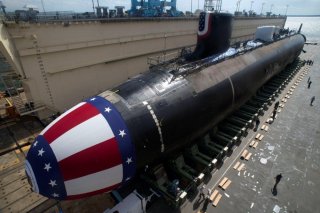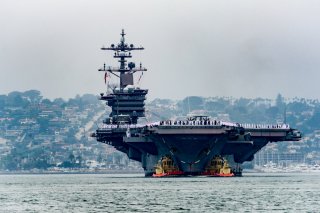Nuclear Submarines and Aircraft Carriers
- Heat from powered nuclear reactors makes the steam needed to power some submarines and aircraft carriers in the United States fleet.
- When a nuclear vessel is taken out of service, the federal government disposes of and monitors its radioactive parts.
Some of the submarines and aircraft carriers in the United States fleet are powered by nuclear reactors.
About Nuclear Submarines and Aircraft Carriers
In 1954, the Navy launched the first submarine that used radioactive material as a power source. Its name was the USS Nautilus and it was the first submarine to travel to the North Pole in 1958. Before then, submarines used diesel engines and had to go into port for fuel. Nuclear power allowed submarines to run for about twenty years without needing to refuel. Food supplies became the only limit on a nuclear submarine’s time at sea. Since then, similar technologies have been developed to power aircraft carriers.
Source: U.S. Navy
Nuclear submarines and aircraft carriers are powered by onboard nuclear reactors. Atoms in the nuclear reactor split, which releases energy as heat. This heat is used to create high-pressured steam. The steam turns propulsion turbines that provide the power to turn the propeller. Additional turbines also make electricity for the ship. As the steam cools and condenses back into water, the water is directed back through the system, and the process starts again.
The nuclear reactor compartment is shielded to protect the crew from the radiation released by the reactor and crew access is prohibited during reactor operation. Reactor engineers wear radiation monitors that are checked regularly. They follow strict safety procedures, work in shifts and carefully plan the work to limit radiation exposure.
Source: U.S. Navy
When the nuclear reactors used to power submarines and aircraft carriers are disposed of, the Department of Defense maintains and monitors the radioactive parts. When submarine and aircraft carrier nuclear reactors are no longer being used, the compartments are shipped to the final disposal site on barges. During shipment, the Coast Guard or the Navy will provide an escort vessel to ensure the security of the barge. The Coast Guard may periodically inspect the barges. The Navy must comply with Department of Transportation (DOT) regulations when shipping the reactor compartments. Radiation levels must not exceed DOT limits. These limits are in place to protect workers, the public and the environment while shipping and managing the reactor compartments and components. The Department of Energy (DOE) disposes of some types of contaminated reactor parts from nuclear vessels at the Hanford facility in Washington State. These contaminated reactor parts are stored in specially designed waste storage cells.
What You Can Do
- Respect safety zones. Safety zones are often established around contaminated sites. These zones limit public access to hazardous materials. The people working inside of the safety zone are trained professionals who are educated in safety procedures and potential hazards. Radiation safeguards for nuclear vessels are extremely thorough and strict. There is no reason civilians should ever encounter any exposure risk from nuclear submarines or the disposal sites that store the dismantled reactor compartments.


